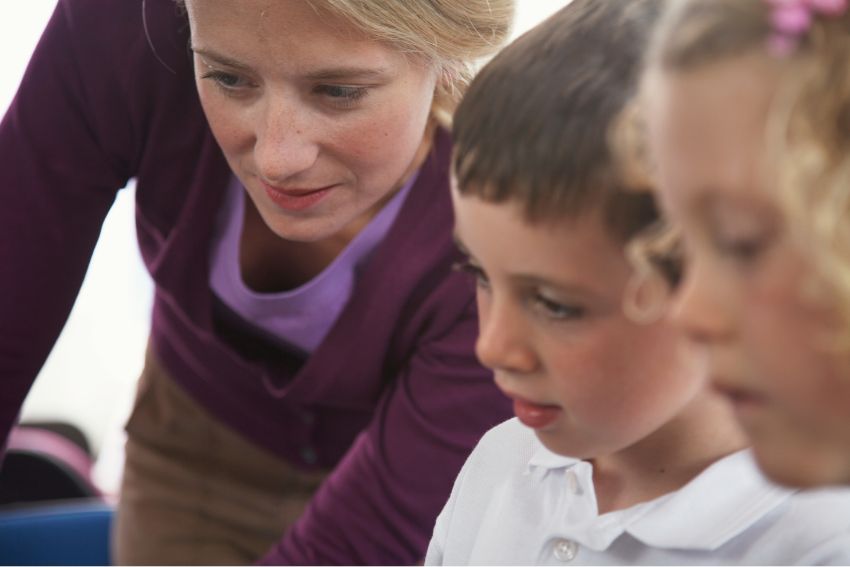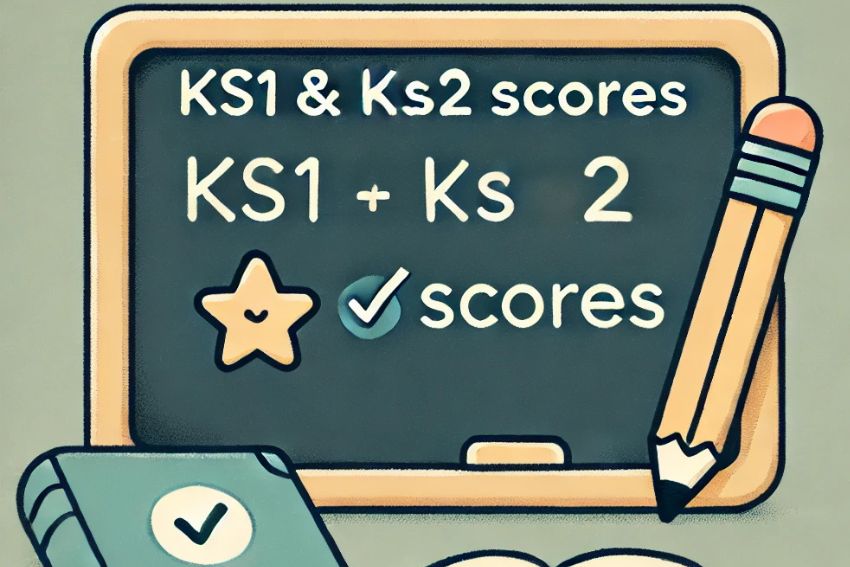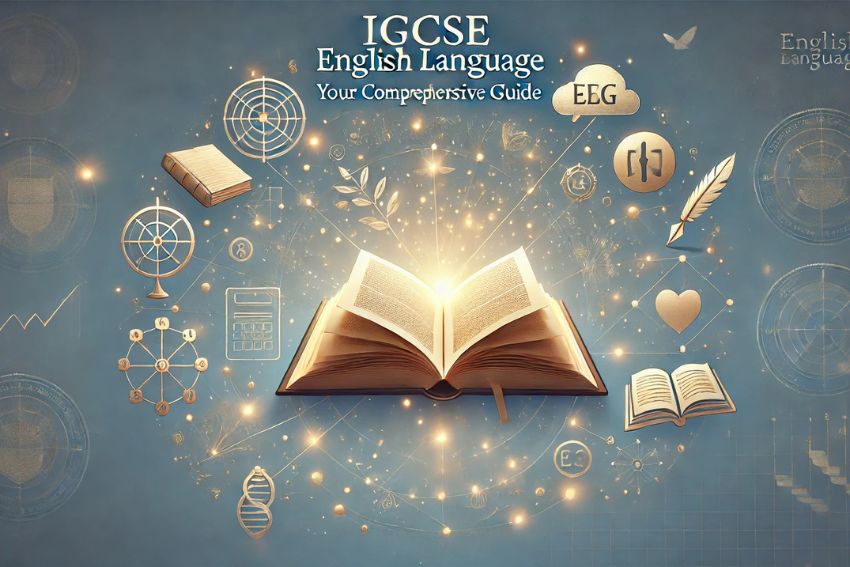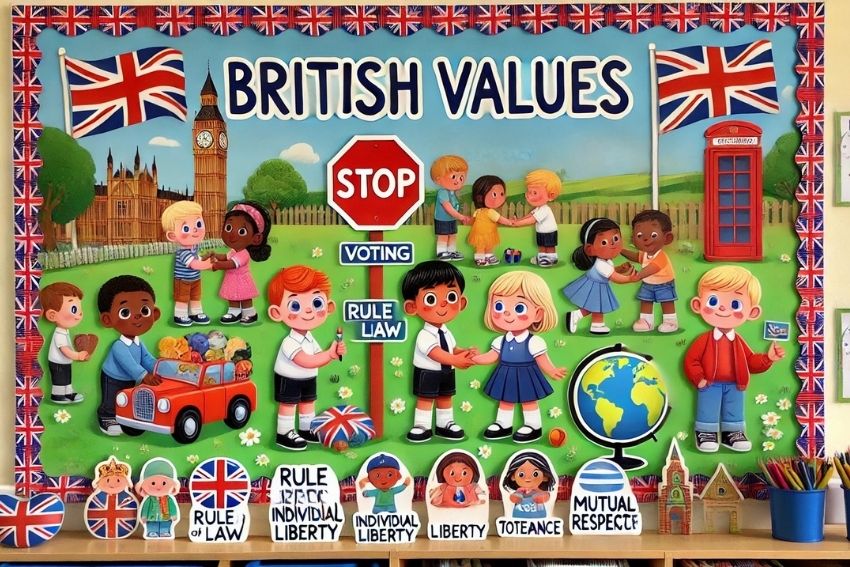If your child is in primary school, you’ve likely heard of SATs, but many parents are unsure what they involve. You may have wondered, What are SATs? These tests assess English and Maths skills in Year 2 (KS1) and Year 6 (KS2), helping schools track progress and provide support. However, many parents find SATs confusing. How are they marked? Do the results affect secondary school placement? What can you do to support your child?
This blog will answer all these questions and more. We’ll explain what SATs are and the subjects covered in KS1 and KS2. You’ll also learn how SATs are scored, what the results mean, and how secondary schools use them. Finally, we’ll share practical ways to help your child feel confident and prepared before and after the tests. By the end, you’ll have a clear understanding of SATs and how to support your child through them.
- What Are SATs?
- Key Stage 1 SATs – Year 2
- Key Stage 2 SATs – Year 6
- SATs Week 2025 – Key Dates
- How Are SATs Marked?
- SATs Results
- What Will Be in the KS1 and KS2 SATs Papers in 2025?
- How Can You Make SATs Prep Stress-Free for Your Child?
- Simple SATs Revision Schedule
- SATs Are Over! What’s Next for Your Child?
- Conclusion
What Are SATs?
What Does SATs Stand For? Children in Year 2 (Key Stage 1) and Year 6 (Key Stage 2) take SATs, or Standard Assessment Tests, as part of national assessments. These tests measure progress in English and Maths and help schools understand each child’s strengths and areas that may need improvement.
In KS1, teachers assess SATs, focusing on reading and maths. In KS2, SATs include formal written exams covering reading, grammar, punctuation, spelling, and maths. While these tests do not determine secondary school placements, they provide valuable insights into your child’s learning journey.

Key Stage 1 SATs – Year 2
Now that we’ve covered what SATs stand for, let’s look at some details. Children take SATs at age 6-7, and teachers now assess these tests instead of administering formal exams. Since 2023, KS1 SATs have become optional, meaning schools decide whether to administer them. They focus on:
- Reading: Tests comprehension through fiction, non-fiction, and poetry extracts.
- Maths: Covers basic arithmetic and reasoning skills.
- Writing and Science: Assessed by teachers based on classroom work rather than a written exam.
Key Stage 2 SATs – Year 6
Students take KS2 SATs at age 10-11 as formal written exams. Unlike KS1, KS2 SATs are externally marked, and results help schools track progress before students move to secondary school. These assessments cover :
- Reading: One paper with comprehension questions based on different text types.
- Grammar, Punctuation & Spelling (GPS): Two papers – one for grammar and punctuation (short-answer questions) and one for spelling (dictation-style test).
- Maths: Three papers: one for arithmetic (basic calculations) and two for reasoning (problem-solving and mathematical thinking).
- Writing and Science: Assessed by teachers throughout the year.
Here you can find detailed information about: Key Stages and Ages: School Years Made Simple For Parents
SATs Week 2025 – Key Dates
Understanding when SATs take place is important for planning and preparation. Here is how SATs Week looks like for both KS1 and KS2 in 2025.
KS1 SATs – Administered throughout May 2025.
KS2 SATs – The schedule is usually confirmed a year in advance to allow preparation time. The key dates for 2025 are:
- Monday, 12 May 2025 – English grammar, punctuation, and spelling (Paper 1 & 2).
- Tuesday, 13 May 2025 – English reading paper.
- Wednesday, 14 May 2025 – Maths Paper 1 (Arithmetic) & Maths Paper 2 (Reasoning).
- Thursday, 15 May 2025 – Maths Paper 3 (Reasoning).
KS2 SATs 2025 results will be released in early July and schools will share them with parents shortly after.
How Are SATs Marked?
Since we’ve covered who takes SATs and when, let’s look at how they are marked and what the scores mean. SATs don’t use traditional letter grades. Instead, they assess whether students are meeting the expected standard for their age.

Year 2 SATs Scores (KS1)
Like we already mentioned KS1 SATs are teacher-assessed so that means that – there is no formal pass or fail marks. Teachers evaluate a child’s performance based on classroom work, test results, and overall progress. These assessments help schools identify strengths and areas for improvement without placing pressure on young learners.
Year 6 SATs Scores (KS2)
KS2 SATs use a scaled scoring system to ensure fairness across different test years. The raw scores from the exams are converted into scaled scores, which range from 80 to 120. So, here is year 6 SATs scores explained :
100 or above – Meets the expected standard.
Below 100 – Additional support may be needed in certain areas.
120 – The highest possible score, showing exceptional performance.
There is no official pass or fail, but secondary schools may use SATs scores to help place students in ability groups for subjects like English and Maths.
SATs Results
You must be curious about what happens once the results are released. SATs results are used by both schools and the government to assess student progress and monitor educational standards.
Schools use SATs scores to understand a child’s strengths and identify areas needing improvement. These results help teachers:
- Set learning groups – Schools may place students in ability groups for subjects like English and Maths in Year 7.
- Provide targeted support – Teachers provide extra help to students who score below the expected standard.
- Track progress – Results show how well students have developed since their last assessment in KS1.
How the Government Uses SATs Data?
The government collects SATs results to monitor national education standards and ensure schools are performing effectively. These scores help:
- Evaluate school performance – Schools are compared based on SATs results, and low-performing schools may receive additional support.
- Inform education policy – Data from SATs helps shape curriculum decisions and national education strategies.
- Measure progress over time – The government uses results to track trends in student achievement across the country.
While SATs results are important, they are just one way of measuring progress. Schools also consider teacher assessments, classroom performance, and individual learning needs when supporting students. SATs data contributes to decisions about the primary school curriculum, helping policymakers refine learning objectives and maintain high educational standards.
How Schools Report SATs Results?
Once SATs are marked, schools receive the results before sharing them with parents. Teachers usually discuss KS1 SATs results with parents as part of their overall assessment, while KS2 SATs results are more formal and include scaled scores. Most schools provide results in the end-of-year report, and some may offer parent meetings to discuss the outcomes.
What Will Be in the KS1 and KS2 SATs Papers in 2025?
We’ve covered how SATs are marked, let’s take a closer look at the subjects and structure of the KS1 and KS2 SATs papers in 2025. Each stage checks core skills in English and Maths, but the format differs between Year 2 (KS1) and Year 6 (KS2).
Key Stage 1 SATs Papers
| Subject | Paper | Assessment Type |
| English Reading | Two papers assessing comprehension skills through fiction, non-fiction, and poetry. | Teacher-assessed (Schools may choose to administer tests) |
| Maths | Paper 1: Arithmetic (basic calculations) Paper 2: Reasoning (problem-solving and real-world maths) | Teacher-assessed |
| Writing & Science | Assessed through classroom work (no formal test) | Teacher-assessed |
Key Stage 2 SATs Papers
| Subject | Paper | Time | Assessment Type |
| English Reading | One paper with comprehension questions based on different texts | 60 minutes | Externally marked |
| Grammar, Punctuation & Spelling (GPS) | Paper 1: Grammar & punctuation Paper 2: Spelling test | Paper 1 - 45 minutes Paper 2 - approximately 15 to 20 minutes | Externally marked |
| Maths | Paper 1: Arithmetic Paper 2: Reasoning Paper 3: Reasoning | Paper 1 - 30 minutes Paper 2 - 40 minutes | Externally marked |
How Can You Make SATs Prep Stress-Free for Your Child?
Should I help my child prepare? Of course! Helping your child prepare for SATs doesn’t have to be stressful. With the right approach, they will feel more prepared.
To start, create a positive learning environment at home. Encourage a growth mindset by praising effort, not just results. Mistakes are part of learning, so remind your child that every challenge helps them improve.
Next, try fun revision methods to keep studying engaging. Use interactive games or educational apps. These activities make learning feel more natural and less like a chore. Practising with SATs-style questions is also essential. Working through past papers and sample questions helps children get comfortable with the format and improves their time management skills. The more familiar they are with the test structure, the more confident they’ll feel.
Finally, don’t overlook test stress management. Encourage regular breaks, maintain a balanced routine, and reassure them that SATs are just one part of their education. A relaxed and positive approach will help them stay focused without feeling overwhelmed. SATs are your child’s first experience of a test, so right support is a must.
SATs Past Papers
Practising with SATs past papers is one of the best ways to prepare your child for the tests. Not only do these papers help students get familiar with the question format, but they also improve time management by simulating real exam conditions. Additionally, working through past papers helps children understand the marking style, making it easier for them to structure their answers correctly. As a result, regular practise with these papers strengthens test-taking skills and reduces anxiety before the actual exam. Now that we’ve covered preparation strategies, let’s explore what happens after SATs.
Simple SATs Revision Schedule
| Weeks Before SATs | What to Focus On |
| 6 weeks | Light revision, 15–20 minutes a day |
| 4 weeks | Practising with past papers |
| 2 weeks | Time-based practice under exam conditions |
| 1 week | Review weak areas |
SATs Are Over! What’s Next for Your Child?
Once SATs are over, many parents wonder what comes next. The good news is that students can finally relax and enjoy the rest of the school year without the pressure of tests.
In Year 2, teachers continue to assess progress through classroom activities, using SATs results as part of their overall evaluation. Since teachers assess KS1 SATs, they shape future learning without adding extra stress.
In Year 6, students focus on transitioning to secondary school. Many schools organise transition days, where Year 6 pupils visit their new school, meet teachers, and get a feel for the new environment. Some schools use SATs results to help place students in ability groups for subjects like Maths and English, but these scores don’t determine secondary school admission.
For parents, this is a great time to encourage a positive mindset about learning. Whether your child excelled or struggled with the tests, their continued progress matters most.
Conclusion
Now that we’ve walked through everything, you know exactly what are SATs and why they matter. While they are an important assessment, they are just one part of your child’s learning journey. More importantly, they provide valuable insights into their strengths and areas for improvement, helping schools offer the right support.
As a parent, your role is essential in making this process smoother. By encouraging a positive mindset, creating a stress-free revision routine, and celebrating effort rather than just results, you can help your child feel more prepared. Even if they find SATs challenging, the focus should always be on progress, not perfection.
If you’re looking for online tutors for your child, they can provide personalised support and make revision more effective and build confidence before the tests. With expert guidance, they can strengthen key skills, improve exam techniques, and feel more at ease with the SATs format. With the right preparation and encouragement, your child can approach SATs feeling confident and ready for success!
FAQ’s
Do SATs affect which secondary school my child will attend?
No, SATs do not determine secondary school placements. Admissions are based on factors like catchment areas and school applications, not SATs scores. However, some secondary schools may use SATs results to group students by ability in subjects like English and Maths.
What happens if my child doesn’t meet the expected SATs standard?
If your child scores below 100 on the scaled score, it means they haven’t met the expected standard. However, this doesn’t affect their move to secondary school. Instead, their new teachers may provide extra support in areas where they need improvement to help them catch up.
Why are SATs controversial?
People debate SATs because they believe these tests put too much pressure on children and focus too much on test results instead of overall learning. Critics argue that they lead to “teaching to the test”, where schools prioritise test preparation over broader education. Others, however, believe SATs are important for tracking progress and ensuring students are meeting national learning standards.
Can my child retake SATs if they don’t do well?
No, children cannot retake SATs in primary school. However, if they don’t meet the expected standard, secondary schools will often provide additional support in Year 7 to help them improve in Maths and English.
Do all schools in England have to do SATs?
Most state-funded primary schools in England must administer SATs. However, private schools and academies can choose whether to take part








